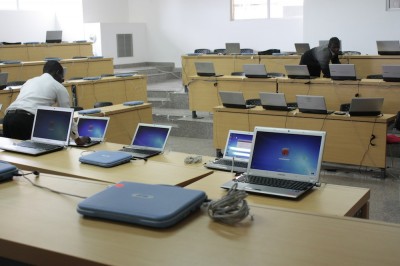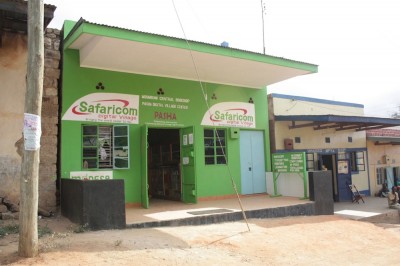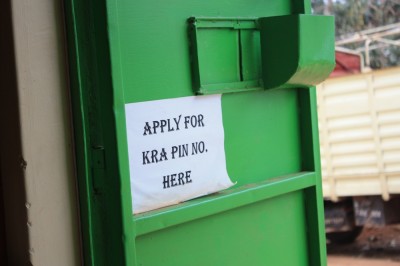Archive for the ‘Ecosystem’ Category
The Innovation EcoSystem in East Africa
This post is the third in a four-part series on Africa: The Present Frontier
“Many investors see East Africa’s strong growth potential as a driver of better investment performance than in South Africa: This is a huge shift in private equity attitudes toward Africa, which have been historically focused on South Africa. East African investment potential is seen as roughly on par with West Africa, where similar growth dynamics are at play.”
Attitudes are changing. New ideas are emerging from a continent few technology investors took seriously only a few years ago. The ideas that have modified the world’s attitudes about investing in Africa have been ignited by four elements of the innovation ecosystem which have come to life and began to flourish. Like a mother giving birth, every element first ‘popped’ and then began to grow as the continent writhed in pain. The pain of implementing new infrastructure, enforcing better governance, creating new policy and regulating new services like mobile telecommunications and mobile money that have catalyzed the rise of tech innovation on the continent.
Four elements within the innovation ecosystem are playing a big role in changing Africa’s profile on the tech scene. However, they are all areas that still require great deals of investment, representing in themselves opportunities for anyone astute enough to see ways in which they can be exploited.
- Education is a big part of the ICT innovation ecosystem. The quantity and quality of ICT programs offered by educational insistitutions and other organizations can have an impact on the quantity and quality of tech innovations coming to the surface. The ICT education sector in Africa has evolved from offering plain computer science programs to multidisciplinary ICT programs like Bachelors in Business IT and Masters programs in ICT Policy & Regulation. However, there is a need to diffuse this education beyond first tier cities by creating the right business and regulatory environment to encourage the growth of training centres in rural towns.
- Mentoring & incubators. Educated young people with great ideas need the right environment and mentorship to work on their idea and prototype it. Hubs & incubators are helping to do that. iHub, mLab East Africa, ccHub, Bongohive, HiveColab and others across the continent are making it possible for tech innovators to find a physical space in which they can build their ideas out in good company and find mentors to help them make the leap from idea to viable profitable businesses. These organizations are also providing valuable linkages between entrepreneurs and potential investors. There are currently 53 hubs and incubators on the continent with the vast majority in sub-Sahara Africa according to this crowd-sourced data. There’s room to set up more of these in East Africa, especially outside the capital cities.
- Funding these ideas to launch or to scale is a big challenge for both venture capital funds and entrepreneurs. Many tech startups do not always have the business processes or track record investors are used to and entrepreneurs usually don’t know what investors are looking for in a business. We need to go beyond the traditional approaches to investing in tech startups and explore other mechanisms to provide them with the headstart they need. In Kenya, the Kenya ICT Board awards $50,000 under its Tandaa grant program helping businesses with good ideas access capital they would otherwise not obtain & The World Bank has also committed $55million to help innovators in Kenya bring their ideas to market. In spite of the challenges, East Africa and Kenya in particular has experienced an upsurge in investor activity with Deloitte’s private equity survey report for 2012 describing the outlook as promising. 16 new funds dedicated to the region launched in 2011 alone, a sign that the private sector is willing to do its part in funding good businesses that rise to the surface. Some of the funds that have been active in the region are early stage venture funds like EVA fund and 88mph which are making it possible for startups to access seed capital for commercially viable ideas.
- Showcase events provide easy-to-access platforms that allow startups to show off great ideas to investors and potential partners. They are a useful part of any ecosystem. In the US, DEMO has worked well helping bring ideas to the attention of investors. Ideas like Salesforce.com, VMWare and Adobe Acrobat benefited from the platform DEMO provides entrepreneurs. These events not only put people with ideas infront of people with money, they also generate press and content about these businesses that many of them could never afford to do on their own. In East Africa, PivotEast provides 25 techpreneurs with an opportunity to pitch their ideas before a room full of investors. This year, PivotEast is happening on the 5th and 6th of June at the Ole Sereni hotel in Nairobi. Later this year, DEMO in conjunction with the USAID, Microsoft, Nokia and other partners are launching an international event in Africa. DEMO Africa‘s inaugral event will be held in Nairobi on October 21 & 22.
Education, mentoring, financing and showcases. These four elements are in place, functioning and growing. They are contributing to the rise of tech innovation on the continent and making it easier than ever for investors to find teams with great ideas in which to invest. This is the last virgin tech landscape left on the planet. The best time to become a player in the African technology innovation ecosystem is now.
Four Things to Consider When Designing Small Solar Systems for Africa
If you are preparing to launch a solar lighting product in sub-Sahara Africa, especially Kenya, here are four things to consider based on my observations in Eastern Kenya earlier this year. No citations here, no scientific data just my thoughts.
- Tradeoffs will happen. Be on the right end of the tradeoff when it does. Usually these tradeoffs are not just price versus features but new thingymajigy vs status quo. Despite the trouble with kerosene, most consumers know how to cope with it. Save the customer time or money and you will be on the better side of the tradeoff. Time in getting a job done or money that is spent as a consequence of the existing solution (medical bills for children studying by kerosene lamps, burns, continued purchase of kerosene etc). If the payoff from your solar solution appears to require a long wait, you may already be on the wrong end of the tradeoff. Find a different benefit to present.
- Aspirations exist. Customers purchasing their first solar lighting product are moving up from kerosene to something cheaper to run. However, once they light up their house they begin to plan for the next electricity consuming device. A bigger radio and a television rank fairly high on the list of these customers. If your product can scale up with them to a point on that journey, they won’t feel they will have to write it off when they are ready for something bigger. Panels that form an array, charge controllers that can be replaced with bigger ones, the option to add batteries…these are some of the ways you can plugin to the customer’s aspirations and grow with them. A point to note; solar home system users in off-grid locations consider a grid connection once it becomes available despite the obvious cost benefit of solar power. A grid connection is considered a step up.
- Price isn’t everything. People like to show off their latest acquisitions, especially when these acquisitions translate into improved perceptions of their social status by their own peers. If your product is known for being cheap, that erodes the ‘brag-abilty‘ of it. Nokia mobile phones were very popular in the slums of Kibera despite not being the cheapest.
- Be part of an ecosystem. While showing off a solar product to residents of rural towns in Kenya earlier this year, they repeatedly asked what they would do with it if it needed repair. Because it features an LED light with integrated power storage, they immediately began asking how it would work with regular solar bulbs or readily available alternatives. They complained the panel was too small (they hesitated to classify it as a solar solution) and it worked with nothing else they that is readily available at their local electronics stores. Any one of those issues was a deal breaker. Play nice with others in the ecosystem and that includes other LED lights, batteries and fundis (local skilled technicians).
It seems to me that any firm selling a 5w-10w panel + 12v 60AH (or more) battery + easily available bulb is on the right path. Now if the solution allows additional panels to be integrated, a charge controller added and bigger batteries plugged in, you have a winner.
Where Opportunities Lie in the African Mobile Space
Africa straddles two realities. One is underpinned by the belief that Africa is the next frontier and measures the continent’s progress against an expected trajectory and momentum modeled on that which developed economies have followed in the past. As the continent leapfrogged wireline technology to adopt mobile at an astoundingly unexpected rate over the first 5 years of this millenium, it proved a point to the rest of the world. Africa is the present frontier. This is the other reality where the continent has brought to market a number of ‘firsts’. Airtel’s (Celtel at the time) borderless mobile network that features no roaming fees, the envy of European consumers. MPesa, Vodacom’s mobile money platform that has been very successful in Kenya and now growing in Tanzania and other countries.
According to the GSM Association, there are an estimated 649 million subscribers in Africa and an estimated 86 million being added to this number by the end of 2012 making Africa the world’s second largest mobile market and the fastest growing in the world. Even then, there’s still an estimated $36 billion of untapped revenue from growth in the 25 largest mobile markets on the continent. Unlike in developed nations, 96% of all subscriptions are pre-paid with voice dominating the revenue matrix. In some markets, data is growing considerably fast contributing significant revenues to the operators’ ARPU. Safaricom, for instance, generated just over $1.1b in revenue with voice calls contributing 67% a 1.2% drop on the previous year. Mobile and fixed data on the other hand jumped 81% compared to the previous year as subscribers used their modems and phones more to access the Internet. More Africans are buying mobile devices resulting in more endpoints added to a highly resilient, ubiquitous and geo-aware distribution platform for content and services.
The rise of mobile in Africa has brought with it obvious opportunities as well as a new class of opportunities that probably didn’t quite exist before. Opportunities for non-profits to reach more people at lower costs, governments to provide services more effectively and across larger geographies, for business to reach more customers and scale at lower cost. Mobile is making it possible for small and medium sized enterprises to compete with big business in ways they couldn’t just a few short years ago. Mobile isn’t just changing the operating landscape for consumer/citizen facing organizations, it’s changing the game. The trifecta of fast growing extensive data networks, cheap data-enabled handsets and a fast growing mobile money ecosystem is setting the stage for probably the greatest disruptions to the landscape yet. We are observing the emergence of fascinating opportunities in Africa, many which are providing new growth areas and could potentially power GDP growth further over the coming years. Here are a few;
- OpenGov and mGov – Govenments can now potentially reach more citizens than ever before with services that don’t require physical access to government offices. For instance, mobile allows governments to provide birth registration, community policing and even payment of taxes (Tanzania allows the use of MPesa for tax payments) at very low cost. It is also possible to now involve citizens in their own governance and scale programs further faster and cheaper than ever before. These also presents new opportunities for businesses that can provide governments with the tools they need to get the job done. Socrata and Knoema, for instance, provide visualization and analysis platforms for the Kenya government’s open data initiative and the African Development Bank Open Data for Africa portals respectively. However, there are still opportunities for developers who can build applications that help communicate public data in a way that citizens can easily understand on mobile phones.
- mHealth & mEducation – There are, as far as I can tell, no commercial successes in Africa in the mHealth and mEducation sub-sectors. However, programs like Dr. Math running on MxIt in South Africa and MOTECH currently in Ghana demonstrate the potential that lies untapped in the mobile platform as a channel. One of the ventures to watch is MedAfrica which is using Kenya’s Open Data in addition to other datasets provided by industry stakeholders to provide a commercial mHealth service.
- Financial intermediation – In this space lies the well known mobile-to-mobile money transfer services that emerged on the continent 5 years ago such as MPesa and Zap (now Airtel Money). Since then, the high and rapid penetration of mobile subscriptions and mobile money subscriptions in East Africa created new opportunities for financial services intermediation. Mobile-to-bank / bank-to-mobile services as well as mobile-to-web services that now make ecommerce via mobile money a reality have began to take hold. South Africa’s Fundamo has been present in the mobile money space since 2002 and was recently acquired by Visa International. Kenyan firm Cellulant, now serving institutions in at least 8 countries in sub-Sahara Africa is powering mobile banking services and content distribution via mobile phone for institutions such as Barclays Bank. Pesapal, launched in
20102009 as the first payment gateway that made ecommerce via mobile money a reality. It now also provides utility and bill payments via mobile money and debit/credit cards. Since its launch, other firms have emerged in that space including Bilmobile in Egypt, iPay in Kenya and many more. This continues to be a growth area across the region and one where new opportunities will continue to emerge. - Business platforms – Small and medium sized businesses adopted mobile money fairly early. However, they failed to integrate mobile with business infrastructure. That is changing now with players like VirtualCity providing supply chain platforms that make sales and distribution management solutions via feature phones and smart phones possible. Their DistributR solution is now available as SaaS with the potential to scale rapidly across the region. ERP maker SAP has also recently announced the launch of it’s mobile solution that will provide businesses on their BusinessOne platform with mobile extension of their ERP services. In the past, achieving this level of enterprise mobility required huge investments in infrastructure and software. Now mobile-powered business solutions can be rolled out by small business within days of the decision to acquire. Enterprise mobility is probably the least exploited opportunity by local developers and one which international firms with the technology and understanding of the African market could seize for growth.
Government Services Intermediation: The New Role for Cybercafes.
Mbumbuni is a rural market town in Kenya’s Mbooni East District approximately 120km from Nairobi. Within the market is one of the Kenya ICT Board supported Pasha Centers and probably one of the best equiped cybercafes I have seen. When I visited the area in August of 2011, the 3G signal was poor and the center was using a GSM router connecting via EDGE to provide access to clients. The resulting experience was of course poor. For the residents in the area, the next cybercafe with a good connection is in Masii 8km away or in Wote town 50km away. For anyone wishing to register with the tax authority (a prerequisite to opening a bank account), a working cybercafe is the primary mode of accessing the authority’s online portal. There is no way of obtaining the registration at a KRA office. Cybercafes and Pasha centers charge an average of Ksh150 and as high as KSh250 to help clients complete the process and only a per minute charge for those savvy enough to login and do it themselves. For the residents of Mbumbuni, the Pasha center is their first option. Other options are guaranteed to be more expensive.
In the last four months I have travelled to parts of Kenya I only read about. Some of them almost 600 km away from Nairobi and others just an hours drive away. I have seen places where cybercafés are doing great and others where they are struggling to stay open. The landscape is varied but inspiring. Our estimates put the number of cybercafes in Kenya at approximately 2,500 most of them concentrated in the more densely populated parts of the country. Although statistics show a growing number of Internet users (35% of the population at last count), the vast number appear to be using their mobile phone as their primary gateway. Although feature phones can now provide 3G Internet access, play music and take pictures they still can’t print, scan or edit documents. With very low PC penetration in the country the rational decision is to therefore default to cybercafes for these tasks and others not yet available on mobile. Such as eGovernment.
The move by government departments and agencies such as the Kenya Revenue Authority to port services onto online spaces and then discontinue offline provision can be seen as a sign of progress. However, in using eGovernment to scale services fast across large areas at low cost, new barriers to access emerge. Digital barriers and cost barriers. These barriers have created new opportunities for cybercafé owners and Pasha center entrepreneurs allowing them to charge for a service that didn’t exist only a couple of years ago. The cyber café has now acquired a new role as an intermediary to government services introducing with it new costs of intermediation.
Whereas eGovernment presents a new opportunity for private enterprise in the form of new intermediation services, the government still needs to find ways of encouraging telcos to deploy better last mile connectivity (3G, LTE) to rural places where the financial investment may not achieve ROI in the short term. If poor connectivity remains a problem, the services may not be any closer to the people than they were before when the residents of Mbumbuni and Masii had to travel to Machakos, Wote or even Nairobi to get government services. In my opinion, there are three areas the Directorate of eGovernment and other actors in the space may consider giving priority as Kenya marches on into a fully digital future.
Better connectivity. Better 3G or LTE connectivity for the last mile to the cybercafes located in rural areas is a good place to start. Providing better connectivity could trigger consumption of data as people find utility for it. In places such as Maai Mahiu and Isinya we heard from a couple of people how frustrating spotty connections are. In Isinya, 40km from the city of Nairobi, residents opt to travel to Kajiado town or Kitengela rather than endure the local cybercafe’s unreliable connections.
Pricing Interventions / Guidelines. When intermediation services become high enough to become a bona fide barrier to access, there’s a problem. Ksh250 is enough to feed a family of four for a day or two. In areas where government services are only available online, this could mean that some families opt out of crucial government services they shouldn’t be having to do without. The initial premise is to bring services closer to the people. High financial costs neuter that objective. Introduction of price caps that keep it financially interesting for enterpreneurs to provide access to these services while remaining accessible to the majority of the people maybe an option worthy of some consideration.
Design for mGovernment. 24 million mobile devices are hard to ignore. Policy guidelines that allows government departments to design and deploy services on the mobile platform should be a priority in the short term. If bringing services closer to citizens is a priority, the mobile handset is as close as it can get.
As new formal intermediaries to government services begin to emerge with the rollout of new infrastructure and services, governments need to keep everyone in the ecosystem on the same page. Cybercafe owners need to remain motivated to provide the services, government departments need to create and train technical and customer care teams and citizens need to be educated on how to access and utilize these services.




